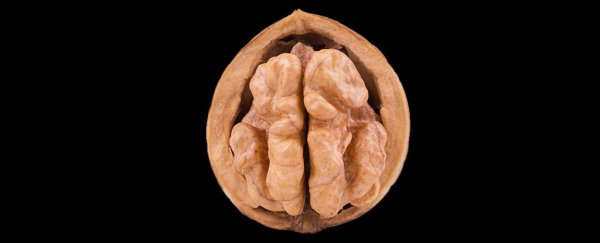Recent studies have shown that the deep folds and wrinkles that make our brains look like giant walnuts don't form in quite the same way in individuals diagnosed with autism - and this could help explain why it's such a complex spectrum.
Autism condition is more accurately described as autism spectrum disorder ( ASD), a term that covers a broad range of loosely related traits including a tendency to be overwhelmed by stimuli and difficulties in developing certain social skills.
On top of that, ASD seems to predominantly affect more boys than girls, which in part could be explained by variations in the thickness of the outer part of the brain - the cerebral cortex.
Now we have more reason to believe that the structure of the brain's top layer might play a significant role in turning autism into an incredibly complex disorder.
A pair of studies analysing neural scans taken of young children and adolescents have detailed the structural development of their growing brains, finding large-scale differences.
Our cortex does a lot of the heavy lifting in our thinking and reacting, controlling everything from our reasoning to communication. To neatly cram all this real estate into our skulls, the grey matter ripples into ridges and crevices called gyri and sulci.
We can measure the development of these neural tissue folds as changes in the local gyrification index (LGI): a ratio comparing the area inside the sulci with the smooth outer surface.
Two teams of researchers looked at the LGI of children diagnosed with ASD to map the extent of their pleating in different areas of their brains.
A team headed by San Diego State University used magnetic resonance imaging ( MRI) scans taken from 128 individuals aged 7 to 19. One half of the group had an ASD diagnosis, which was further detailed through a series of tests.
They discovered significantly more folding in the left parietal and temporal and right frontal and temporal regions among those with ASD, as well as a slightly thicker cortex around the deep crevice known as the lateral sulcus.
While the LGI declined among older members in each group, this drop was more pronounced in several areas in those with a diagnosis.
A second study they carried out on information from an open-access database backed up these findings.
In a separate piece of recent research led by the University of California Davis, the brains of 105 boys aged between 3 and 5 and diagnosed with ASD were compared with 49 controls over a period of several years, giving the team a better idea of how the brains changed over time.
Their findings suggest young children with ASD seem to have a remarkably smooth fusiform gyrus – the part of the brain that helps us recognise faces.
They also found that the LGI was increased at age three in several regions in 17 of the boys who had both ASD and slightly enlarged brains.
Lead investigator Christine Nordahl thinks it might reflect a physical distinction in an ASD subtype.
"We, more and more, are convinced that they really represent a distinct subgroup not only in terms of their brain size but their pattern of brain differences," Nordahl told Rachel Zamzow at Spectrum.
By age five, folding across several regions had increased among children with ASD, unlike those who did not have a diagnosis.
It's clear autism is a vastly complicated condition influenced by an array of genetic changes and environmental conditions.
A great deal of research is currently focussed on identifying physical differences that might appear early enough to give caregivers and the community an opportunity to find resources that might benefit a developing brain with ASD.
Both groups of researchers intend to follow up their work by continuing to study how those folding structures are distinguished in adolescent brains as they grow into adults.
Brain scans like these not only help identify unique differences, they could help point the way to understand how all of our brains grow and evolve.
This research was published in Cerebral Cortex here and here.
